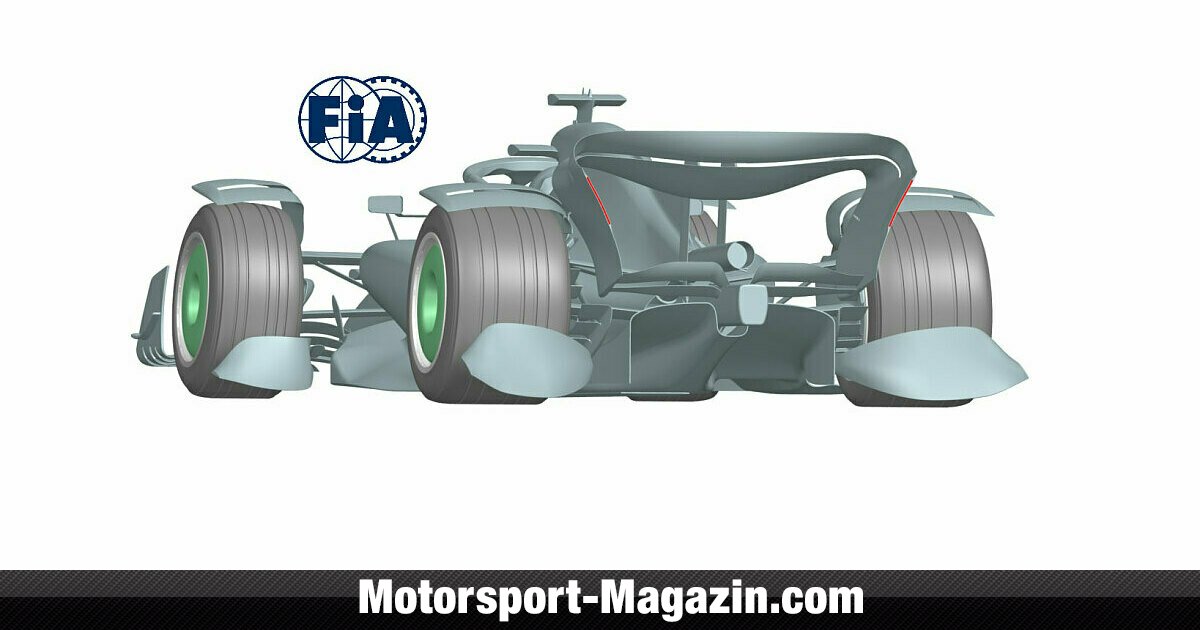Formula 1 and rain – a love-hate relationship these days. In order to prevent constant race cancellations when there is a lot of water on the track, the FIA regulators have initiated the “Spray Guards” experiment in recent years, best translated as rain fenders. But after two tests, the concept was shelved as inadequate.
The idea itself was simple: the problem in heavy rain for Formula 1 today is not necessarily aquaplaning, i.e. water on the track. It’s the spray. The water that is sucked up by the cars and tires and thrown backwards in a huge cloud. When it rains heavily, the third or fourth driver in a queue is blind.
The rain fenders were designed to reduce this spray. In their initial form they were deflectors behind the tires. They were always designed as a solution that could be installed at short notice: the race management would only have ordered their use in the event of heavy rain. In this way, it was hoped that Horror scenarios like in Spa in 2021, when after hours of waiting the race was scored with only two laps.
Rain fenders are not enough: Formula 1 has more problems than just tires
The first design debuted just over a year ago during a test at Silverstone. The format: Wet track, one car with the fenders in front, another behind for a check. No notable progress was recorded. Too small, too loose, too little impact. Back to the drawing board – there they radically turned the idea inside out and then, with the help of Ferrari, made another attempt at their home track Fiorano at the beginning of May.
Technically the solution was more difficult than expected. The original versions were already smaller than desired. With larger parts, the aerodynamic forces become a problem. The images from the Ferrari test then showed a fundamentally different solution. Instead of fenders, complete wheel arches were installed.
“What we wanted to try was a complete fairing, even beyond what would be practical, to see what would be the maximum we could achieve,” Nikolas Tombazis, head of the FIA formula department, explains the thinking behind it to ‘ Autosport’. After the poor results of the first test, the first step was to understand whether the concept had any potential at all.
The answer is negative, says Tombazis: “We have seen certain effects, but not sufficiently significant to declare it a solution.” This was also hinted at by Ferrari junior Oliver Bearman, who drove the chase car in Fiorano. “Pretty similar,” Bearman described it afterwards.
It had actually already become apparent. “Let’s say we answered a few questions, I think,” says Tombazis. “We know where we stand, but this project will not continue in this form for the time being.” Even before the first test, there were doubts as to whether the tires were the main cause of the spray.
The car itself is causing bigger problems, more specifically the underbody and the diffuser. Especially with the new ground-effect cars of the 2022 generation, the water is literally sucked in and then ejected from the diffuser. This, and the generally increasing level of downforce, has now been identified as the main culprit for the spray problems in Formula 1, which have noticeably increased over the last two decades, and its inability to drive in the wet.
Test failed successfully: Formula 1 is looking for new rain solutions
“Fundamentally, it worked well as a test because it showed us what we were looking for,” Tombazis concluded. “Some tests go well and you say ‘fantastic’. And sometimes it goes the other way around. You learn that the direction you’re going in is not good and you need to move in a different direction. This other direction needs to be established now.”

If the fenders had already brought with them aerodynamic complications, it is much more difficult to work with standard parts in the diffuser or in the underbody. Temporary deflectors that can be installed quickly are practically impossible, admits Tombazis: “In theory you could do something there, but that would be like removing all the downforce and so on. It would be quite a problem.”
“It’s not an easy next step, we still have to discuss it,” said Tombazis. The FIA technicians already want to have a few ideas, but none of them are at an advanced stage. So they are keeping quiet until these new ideas are ready for testing.
